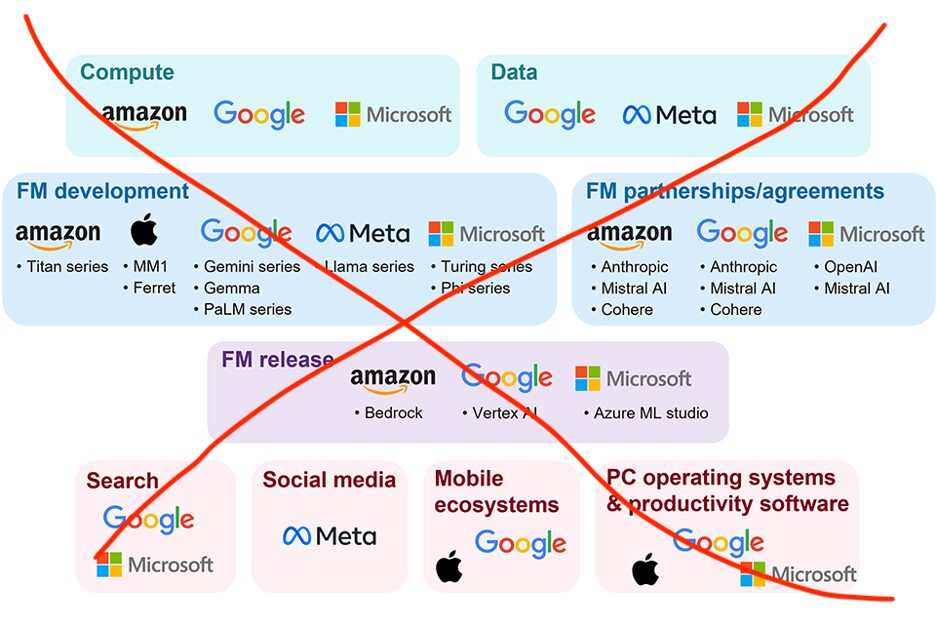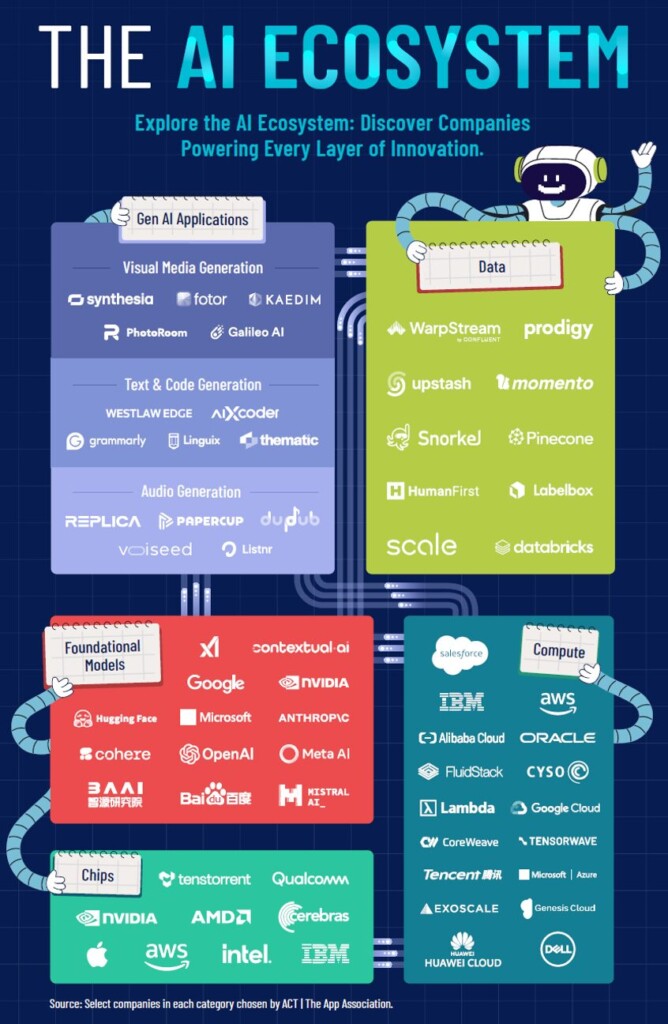Reading into the recent rhetoric from some competition authorities, one might come away with the impression that the AI ecosystem is dominated by a handful of companies working to corner the market and entrench their positions. For example, the UK’s Competition & Markets Authority (CMA), in its April 2024 report on foundational models expressed concern that incumbent tech companies could heavily steer the direction of AI markets, possibly stifling healthy competition. CMA relies on an arbitrarily narrow view of the marketplace, distilled in a now-infamous visual it unveiled at an American Bar Association (ABA) conference, contorted to make it seem like the only competitors in AI markets are the large incumbents.
What the AI Ecosystem ISN’T

However, as shown by the visual below, the reality is that there exists rich complexity and diversity in the AI ecosystem. It is made up of several distinct but interconnected layers, each with a competitive and fast-moving landscape. For example, success of AI startups like Databricks, which recently secured a $10 billion funding round, show the ability of smaller innovators to compete with incumbents. Companies, large and small, contribute across different layers of the AI ecosystem. From hardware and foundation models to generative AI applications, innovation is thriving.
What the AI Ecosystem IS

However, these layers don’t exist in isolation. Progress in one often sparks breakthroughs in others, creating a dynamic and collaborative environment. For example, AI startup Anthropic recently received a sizeable investment from Amazon, allowing it to use AWS’ advanced cloud computing capabilities to more effectively train and deploy its models.
Regulators play a crucial role in shaping the future of AI. However, their actions must reflect the realities of the market, not unwarranted fears. History shows that poorly timed or overly restrictive regulations can hinder progress and stifle competition. As we highlighted previously, AI applications hold great potential for benefiting society. Therefore, regulators must tread carefully to ensure they don’t disrupt this momentum. Enforcers must apply antitrust laws to prevent harm to competition and consumers, but these safeguards must be informed by an accurate understanding of the ecosystem. Overly strict approaches risk reinforcing the dominance of established players while sidelining smaller, more agile innovators.
We should ensure that newer companies contributing to AI development have the best chance to succeed by recognizing the procompetitive role of major firms as important service providers and sources of capital for these entrants. The future of AI is bright when it exists in a regulatory environment that rewards innovation. To do that, regulators need to see the market for what it is: dynamic, decentralized, and full of promise.